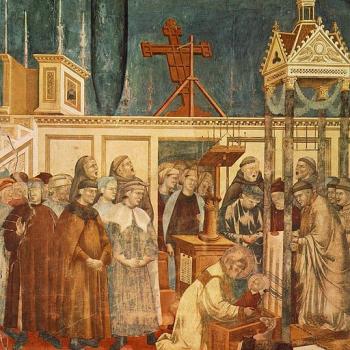Vincent Miller has an excellent post on the America blog entitled Saving Subsidiarity. He has a lot to say; the following are some key quotes.
Subsidiarity envisions not a small government, but a strong, limited one that encourages intermediate bodies and organizations (families, community groups, unions, businesses) to contribute to the common good. It envisions a strong government that protects individuals and small intermediate bodies from the actions of large organizations—not just the state but corporations as well.
In “Quadragesimo Anno” (1931), Pius XI provided the classic formulation of subsidiarity. That document is worth revisiting because its teaching is often distorted by being quoted with insufficient context.The first lines of the paragraph on subsidiarity, which are almost never quoted, alert us that Pius was not simply discussing state power:
As history abundantly proves, it is true that on account of changed conditions many things which were done by small associations in former times cannot be done now save by large associations.
Then follows the now classic definition:
Just as it is gravely wrong to take from individuals what they can accomplish by their own initiative and industry and give it to the community, so also it is an injustice and at the same time a grave evil and disturbance of right order to assign to a greater and higher association what lesser and subordinate organizations can do.
In a conversation related to this post, a friend asked me “who decides”? Meaning, who decides what limits to place on competition, and who decides at what level matters need to be handled? Clearly, these are contingent decisions, but given the messy contingency called the United States of America in 2012, what changes should we (as Catholics) propose to bring our social structure more in line with the principles of subsidiarity and solidarity? Paul Ryan claimed that his budget was an application of subsidiarity, but serious Catholic scholars have found his argument wanting. But what are the alternatives, besides more federal spending and the concomitant centralization of power that this entails?












